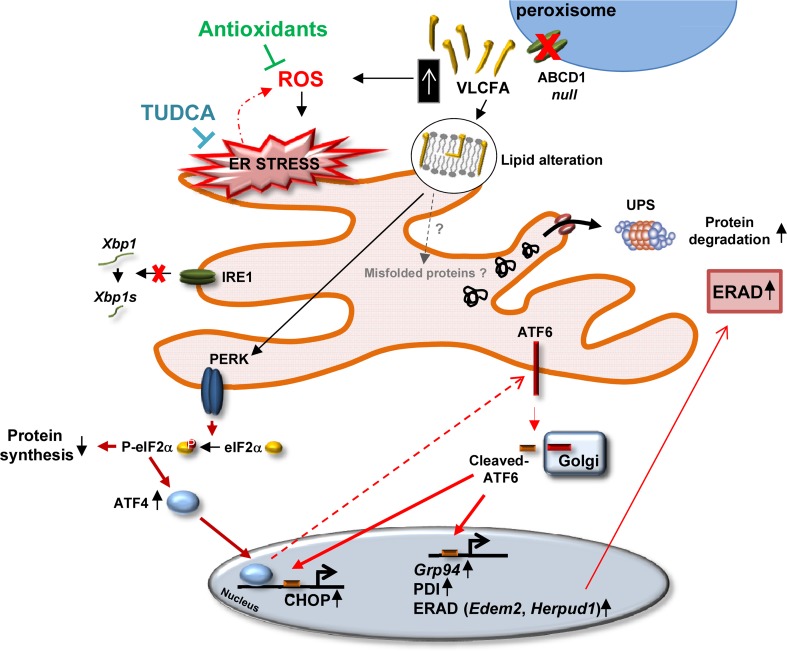Fig. 7.
Mechanisms of UPR activation in the spinal cord from an X-ALD mouse model. Representation of the ER stress response following excess VLCFA due to the lack of ABCD1 function in the X-ALD mouse model. Prior to disease onset (at 12 months), the PERK/P-eIF2α/ATF4 pathway is activated. It is central for translational control but also for the activation of ATF6 during ER stress, and as a consequence, is critical for the transcription of its target genes, including those involved in protein folding or the ERAD. Oxidative stress produced by excess VLCFA and possibly also ER membrane lipid perturbations induced by accumulation of these fatty acids could induce PERK activation independently of unfolded protein formation. This would constitute an adaptive mechanism, allowing the cell to engage ER folding and the ERAD machinery response. Both antioxidant and TUDCA treatments of X-ALD mice prevent ER stress activation and halt subsequent axonal neurodegeneration

